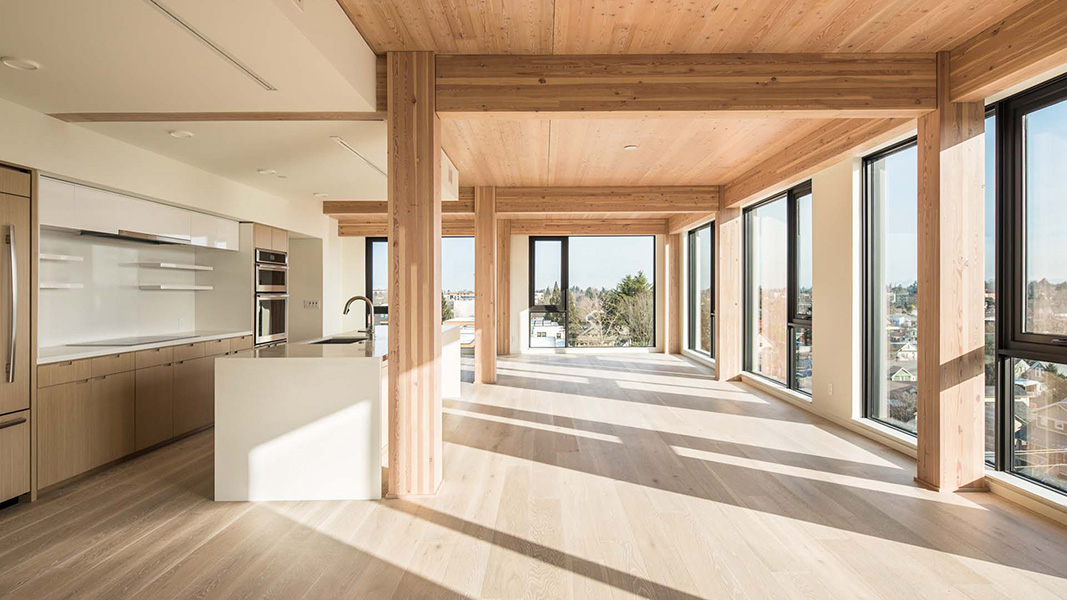Modern Building with Timber Beams: Strength, Style, and Sustainability

Timber has re-emerged as a core material in contemporary architecture, celebrated for its strength, beauty, and ecological advantages. Mass timber construction is revolutionizing how we think about buildings, combining modern engineering with natural materials to create structures that are not only resilient but also harmonious with the environment.
The Return of Timber in Modern Architecture
Timber is re-emerging as a cornerstone in architectural design, not just for its aesthetics but for its structural capabilities. Mass timber products like cross-laminated timber (CLT) and glue-laminated beams (glulam) now rival concrete and steel in strength and performance. These materials support buildings up to 18 stories tall, as demonstrated by projects like the 284-foot Mjøstårn building in Norway, one of the tallest timber structures in the world.
Timber beams bring warmth, texture, and a unique visual appeal that enhances both interiors and exteriors. Exposed woodwork connects built environments with nature, aligning with biophilic design trends. Designers favor these materials not just for their look but for how they contribute to open, modern aesthetics while also serving as load-bearing components.
Mass timber’s engineered strength and dimensional stability allow for complex builds traditionally reserved for concrete or steel. Glulam beams can span over 100 feet without support columns, offering flexibility in commercial and institutional architecture. These materials resist warping and moisture damage when treated properly, outperforming traditional wood in longevity and reliability.
Sustainability is a key factor in timber’s resurgence. Wood is a renewable resource that sequesters carbon—a cubic meter of CLT stores roughly 1 ton of CO2. Compared to steel and concrete, which account for about 16% of global CO2 emissions combined, timber offers a significantly lower environmental footprint. Construction waste is also reduced by up to 30% with prefabricated timber systems.
Off-site fabrication of timber components enables faster builds and reduced labor costs. Pre-cut wood panels, beams, and other elements arrive ready for installation, cutting construction times by 25% or more. This method also limits disruption on-site and supports more consistent quality control. Timber integrates seamlessly with other building materials like drywall, insulation, plaster, and roofing systems.
From copper piping to asphalt roofing and glass features, modern timber structures combine natural and manufactured materials for performance and aesthetics. With the right construction materials, including rebar for foundation integration or aluminum for trim, timber becomes the central element of resilient, visually striking buildings.
Timber’s return is not just a trend—it’s a response to the demand for greener, faster, and more adaptive construction solutions.
Engineering and Innovation Driving Timber Usage
Advanced engineering has elevated timber from a traditional material to a modern marvel. Sophisticated modeling tools and design software allow for accurate simulation of load paths, thermal performance, and seismic resilience. As building codes evolve to accommodate taller timber structures, innovative design strategies continue to push the boundaries of what wood can achieve in construction.
Environmental Harmony and Biophilic Design
Integrating timber into building frameworks fosters a deeper connection with nature, aligning with biophilic design principles. Natural wood tones and textures have been shown to improve occupant well-being, reduce stress, and enhance productivity. This harmony between environment and structure supports a more holistic approach to architecture, where functionality and aesthetics coexist with ecological mindfulness.
Craftsmanship and Customization
Timber construction celebrates craftsmanship. Skilled tradespeople shape beams, joints, and frameworks with precision, allowing for intricate architectural details that highlight the material’s versatility. Whether in minimalist contemporary homes or bold commercial spaces, timber offers the flexibility to tailor structural and design elements to specific project goals.
Balancing Innovation with Tradition
While rooted in traditional building practices, timber’s resurgence is defined by innovation. The integration of digital fabrication, CNC milling, and parametric design has modernized timber construction, enabling complex geometries and bespoke designs that would be difficult to achieve with other materials. This balance of heritage and high-tech speaks to timber’s adaptability across design eras.
Timber as a Framework for the Future
As cities aim to become greener and more efficient, timber offers a path forward. Mass timber buildings not only reduce environmental footprints but also create beautiful, livable spaces that resonate with contemporary values. From structural support to aesthetic enhancement, timber beams embody the integration of form, function, and responsibility.
A Sustainable Structure Rooted in Strength
Modern timber buildings demonstrate that it is possible to achieve strength, style, and sustainability in one cohesive design. As mass timber continues to shape the architectural landscape, its role as a renewable, efficient, and elegant building material becomes increasingly vital. By embracing wood, we are building not just structures, but a future that balances resilience with respect for the environment.
